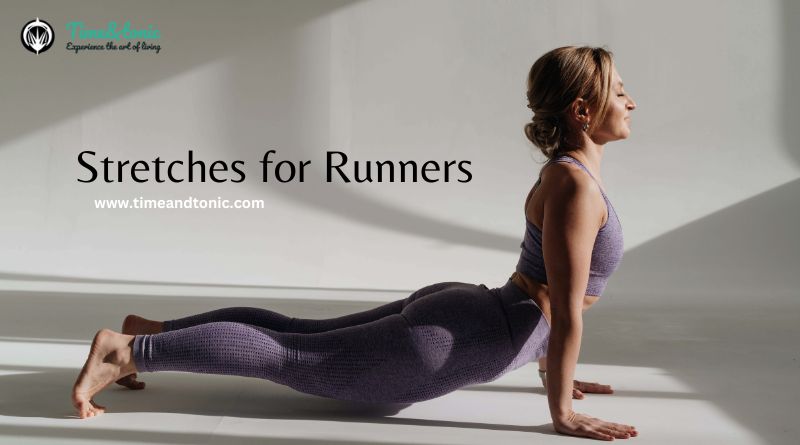The Ultimate Guide to Stretches for Runners
Running is a beautiful and invigorating pursuit, offering us the freedom to explore the world, push our limits, and bask in the euphoria of endorphins. For runners, every stride is a symphony of strength, determination, and rhythm. However, in the relentless pursuit of longer distances and faster times, we often neglect a crucial element of our training regimen—stretching.
Welcome to “The Ultimate Guide to Stretches for Runners.” Whether you’re an experienced marathoner or just lacing up your running shoes for the first time, this comprehensive guide is designed to be your trusted companion on the path to becoming a healthier, more resilient runner.
Stretches for runners are not merely about touching your toes or reaching for the sky. They are the essential bridges connecting your strides, the secret to unlocking your true potential, and the guardians of injury prevention. In this 2,000-word journey, we will delve deep into the world of running-specific stretches, unravelling the science, techniques, and wisdom that will propel you towards greater running success.
In the pages that follow, we will explore dynamic and static stretches, pre-run and post-run routines, the harmony of yoga and pilates, the soothing embrace of foam rolling, and the powerful role stretches play in warding off common running injuries. Whether you’re looking to improve your flexibility, increase your performance, or simply ensure that you can keep pounding the pavement for years to come, this guide has something for every runner in their natural habitat.
What Are Stretches for Runners
Stretches for runners are a collection of specific exercises designed to enhance flexibility, improve muscle strength, and promote overall mobility in the context of running. These stretches are an integral part of a runner’s training regimen for several essential reasons:
Also Read: Bliss Belly Fat Trimming Tea’s
- Flexibility: Running involves a wide range of motions, and maintaining adequate flexibility in key muscle groups is crucial. Stretches help to lengthen muscles and tendons, allowing for a greater range of motion in the joints.
- Injury Prevention: Runners are susceptible to a variety of injuries, such as muscle strains, ligament sprains, and overuse injuries. Regular stretching helps mitigate these risks by promoting balanced muscle development and reducing muscle imbalances.
- Performance Enhancement: Flexible muscles can generate more power and are less likely to become fatigued quickly. Runners who incorporate stretches into their routine often find that they can maintain their pace and form for longer durations, leading to improved performance.
- Post-Run Recovery: Stretching after a run can help alleviate muscle soreness and stiffness, enhancing the body’s recovery process. It also promotes relaxation and can contribute to better sleep quality, which is essential for runners in training.
Also Read: 10 Healthy Low-Carb Breakfast Ideas
Dynamic vs. Static Stretches for Runners
When it comes to stretches for runners, understanding the difference between dynamic and static stretches is essential. Each type serves a distinct purpose in a runner’s training routine and can have a significant impact on performance and injury prevention. Let’s explore the characteristics, benefits, and examples of both dynamic and static stretches:
Dynamic Stretches for Runners

Characteristics: Dynamic stretches involve controlled movements that take a joint or muscle through its full range of motion. These stretches are typically done in a dynamic, fluid manner without holding a static position. They mimic the movements you’ll perform during running and are often used as part of a warm-up routine.
Benefits:
- Improved Blood Flow: Dynamic stretching increases blood flow to muscles, which helps prepare them for the demands of running.
- Enhanced Muscle Activation: It activates and engages the muscles that will be used during the run, promoting neuromuscular coordination.
- Joint Mobility: Dynamic stretches help improve joint mobility, which is crucial for proper running mechanics.
- Injury Prevention: By warming up the muscles and joints, dynamic stretches reduce the risk of muscle strain and injury during the run.
Examples of Dynamic Stretches for Runners
- Leg Swings: Stand next to a support, swing one leg forward and backward in a controlled manner, gradually increasing the height of the swing.
- High Knees: While jogging in place, lift your knees as high as possible with each step.
- Butt Kicks: Jog in place while kicking your heels up towards your glutes with each step.
- Walking Lunges: Take long strides, and with each step, perform a lunge by bending the front knee while keeping the back leg straight.
Also read: Delicious Ideas for Low-Carb Diet
Static Stretches for Runners

Characteristics: Static stretches involve holding a specific position to stretch a muscle or muscle group. These stretches are typically done after a run or as a separate stretching routine. The goal is to elongate the muscle and improve overall flexibility.
Benefits:
- Increased Flexibility: Static stretches gradually lengthen the muscles, improving their flexibility over time.
- Muscle Relaxation: Holding a static stretch can help relax tense muscles and reduce post-run muscle soreness.
- Improved Range of Motion: Regular static stretching can lead to better joint mobility and range of motion.
- Enhanced Recovery: Static stretching can aid in the post-run recovery process by reducing muscle tightness.
Examples of Static Stretches for Runners
- Quadriceps Stretch: Stand on one leg and pull your opposite ankle towards your glutes, feeling a stretch in the front of the thigh.
- Hamstring Stretch: Sit on the ground with one leg extended and the other leg bent so the sole of your foot rests against your inner thigh. Lean forward to feel the stretch in your hamstring.
- Calf Stretch: Stand facing a wall, place one foot behind you with the heel on the ground, and lean forward, keeping the back leg straight.
- Hip Flexor Stretch: Kneel on one knee with the other foot in front, pressing your hips forward to stretch the hip flexor muscles.
Also read: Amazing Low-Carb Breakfast Recipes
Yoga and Pilates for Runners
Yoga and Pilates are two powerful disciplines that can greatly benefit runners by enhancing flexibility, strength, balance, and mental focus. Incorporating these practices into your routine can help you become a more resilient and efficient runner. Let’s explore how yoga and Pilates can specifically benefit runners and provide examples of poses and exercises tailored to their needs:
Yoga for Runners

Benefits for Runners
- Flexibility: Yoga increases overall body flexibility, which can help prevent injuries and improve running efficiency.
- Strength: Many yoga poses engage and strengthen core muscles, hips, and legs, contributing to better running posture and form.
- Balance: Yoga improves balance and proprioception, which are essential for trail runners and those navigating uneven terrain.
- Mental Focus: Yoga emphasizes mindfulness and concentration, helping runners stay mentally sharp during long races.
- Recovery: Gentle yoga sessions can aid in post-run recovery, reducing muscle soreness and promoting relaxation.
Yoga Poses for Runners
- Downward Dog: This pose stretches and strengthens the entire body, including the calves, hamstrings, and shoulders.
- Pigeon Pose: Targets the hip flexors and glutes, relieving tension in these areas often affected by running.
- Child’s Pose: A restorative pose that relaxes the lower back and stretches the spine and hips.
- Tree Pose: Improves balance and strengthens the leg muscles.
Also read: Worst Starbucks Drinks
Pilates for Runners

Benefits for Runners
- Core Strength: Pilates focuses on the core, strengthening abdominal muscles, which is vital for maintaining good running form and stability.
- Flexibility: Pilates exercises promote a greater range of motion in the hips and pelvis, critical for fluid running motion.
- Posture: Improved posture through Pilates can help runners maintain efficient biomechanics and reduce the risk of injuries.
- Balance: Pilates enhances balance and proprioception, essential for runners navigating various terrains.
- Breath Control: Pilates emphasizes controlled breathing, which can help runners manage their breath during long runs.
Pilates Exercises for Runners
- The Hundred: This exercise engages the core and improves endurance, preparing the body for sustained running effort.
- Single-Leg Circles: Targets hip mobility and strength, crucial for maintaining proper running mechanics.
- The Saw: Enhances spinal mobility, promoting better posture during runs.
- Planks: Strengthen the core and upper body, which can help maintain running form, especially during hills.
- Bicycle Crunches: Focus on the obliques to improve stability and rotational strength.
Also read: Healthy Breakfast Ideas for a Nourishing Start
Conclusion
In the world of running, where every step counts, stretches for runners emerge as the unsung heroes of success and longevity. Whether you’re a seasoned marathoner or a novice race-type, incorporating dynamic warm-ups, post-run stretches, yoga, and Pilates into your routine can redefine your running experience.
By embracing flexibility, strength, balance, and mindfulness, you’ll not only run faster and farther but also enjoy the journey injury-free. So, embark on this holistic approach to running, and let your strides be a testament to the power of stretching.
FAQ
Aim to hold static stretches for 15-30 seconds for each muscle group. Avoid bouncing or pushing too hard; instead, focus on a gradual and gentle stretch.
Regularity is key. Aim to stretch at least 3-4 times a week, focusing on both pre-run and post-run stretches. Consistency in your stretching routine is more important than frequency.
Yes, improper stretching techniques or overstretching can lead to injuries. It’s important to use proper form and avoid pushing your muscles beyond their limits. If in doubt, consult a fitness professional for guidance.




